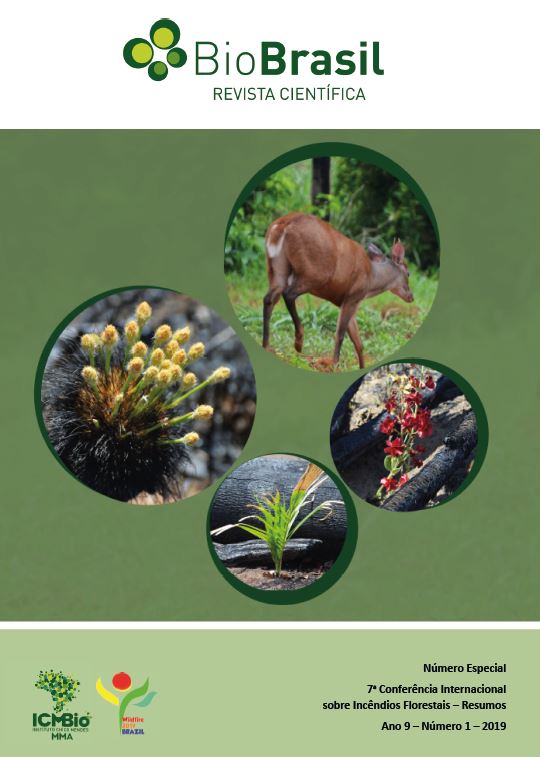Recent Changes in Fire activity in Africa and their Potential Drivers
DOI:
https://doi.org/10.37002/biodiversidadebrasileira.v9i1.1089Keywords:
fire regimes, climate change, MODIS, drivers of fire activity, AfricaAbstract
Several studies report a decline in global burned area in recent years, primarily due reduced fire activity in Africa. In this study, we used the most recent 2002-2016 record of the Collection 6 MODIS MCD64 Burned Area Product to analyze changes in burned area in Africa, and to investigate the potential drivers of these changes. In the study period the burned area in Africa averaged 2.81 Mkm2 yr-1 and declined by 18.5% over the 15-year record with nearly 80% of the decrease occurring in the northern hemisphere. We assessed the potential effect human activity on burned area trends by deriving a 2002-2016 map of agricultural expansion from yearly landcover maps (CCI-LC, 2014) and by considering additional datasets for grazing pressure and road density. Removal of areas that had been classified as agriculture at least once over the study period explained some of the decline in burned area. However, a significant decline in burned area of 12.6% over the 15-years was present in regions that were not agricultural land. No effect was found when stratifying fire activity by political boundaries, grazing pressure or road density, indicating that changes in human activities are unlikely to be the main driver of this change. Secondly, we analyzed the effect of climate by using a simple linear model predicting the annual burned area in each ecoregion as a function of effective rainfall, soil moisture and precipitation as concurrent and antecedent conditions. The linear model explained 73% of the overall burned area trend. The models performed better in the dry and moist subhumid regions where most of the burned area decline is located: the model explains this decline with the increase in effective rainfall and soil moisture, which might have created conditions less conductive to fire ignition and propagation. Overall, the present study confirmed that cropland expansion contributes to reduction in fire in Africa, but it is not the sole driver: our preliminary findings indicate that surface moisture might have equal or greater importance.
Downloads
Downloads
Published
Issue
Section
License
Copyright (c) 2021 Biodiversidade Brasileira - BioBrasil

This work is licensed under a Creative Commons Attribution-NonCommercial-NoDerivatives 4.0 International License.
Os artigos estão licenciados sob uma licença Creative Commons Atribuição-NãoComercial-SemDerivações 4.0 Internacional (CC BY-NC-ND 4.0). O acesso é livre e gratuito para download e leitura, ou seja, é permitido copiar e redistribuir o material em qualquer mídia ou formato.











